Friday, May 26, 2017
Hiatus...
Hello everyone, to those who have been following my blog for the past year, I have had so much fun researching and writing about the things I'm passionate about. Right now I am focusing on my career and need the time to myself when I get it (which isn't often.) May-December is the busiest time for shoppers so I am going to be taking a hiatus until January 2018. I can't wait to be back with new and fresh ideas and continuing with my passion, but until then, farewell.
Labels:
activism,
anti captivity,
beach cleanup,
blackfish,
blue freedom,
blue mission,
change,
climate change,
conservation,
eco friendly,
go green,
plastic free,
reduce reuse recycle,
tree hugger,
whales,
zero waste
Friday, May 12, 2017
Sea Turtle Nesting Season, Lights out!
- Do not disturb a sea turtle that is crawling to the ocean or to lay her eggs.
- Avoid shining lights on the beach, it can frighten the mother and interfere with the hatchlings' ability to crawl to the sea.
- Avoid walking or cycling in nesting areas.
- Do not disturb markers or protective screening over nests.
- Avoid walking on beach dunes.
- Don't litter.
- If you dig any holes in the sand, cover them up before you leave.
- Sea Turtles are protected under the law if you interfere with a Sea Turtle you can be fined and even arrested.
Friday, May 5, 2017
Eco-Friendly Beauty Brands
I'm guilty of buying SO many beauty products that are packaged in all plastic, or things that can be refilled and when I realized HOW much of it I had, I started cycling out my products. Of course, you don't want to throw away what you've already bought because that can be very wasteful, but as you run out of a product, start looking for more eco-friendly brands and products to replace your old earth killing ones. I've made a list of awesome brands that are eco-friendly, some even zero waste. A huge chunk of these brands is also vegan and cruelty-free so I will list that as well.
- Love Beauty and Planet
Love Beauty and Planet have a large selection of shampoos and conditioners from repairing, color-safe, volume and hydration. This company is certified Vegan, is ethically sourced, 100% recycled bottles, no dyes, parabens, or silicones. They also sell hair oils, dry shampoos, and other hair treatments as well. Love Beauty and Planet are also known for their body care, body wash, bar soap, lotions, body butter and more. All of their body products are safe for sensitive skin and have no sulfates.






2. KORRES
KORRES is a greek beauty brand that promotes eco-friendly business. They also use natural ingredients and are cruelty-free. All KORRES products use biodegradable ingredients, 100% recycled packaging and eco-friendly manufacturing practices. This company sells skin care, bath and body, fragrances and lip products.



3. Aveda
Aveda has a "green ingredient promise." This company only uses natural ingredients, 90% certified organic. All packaging is post consumer recycled and their business is powered on wind. Aveda is very popular in salons and spas as their product selection is wide. Aveda sells everything from hair care, skin care, body care, makeup and aromas.
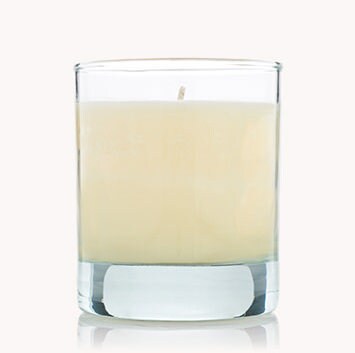
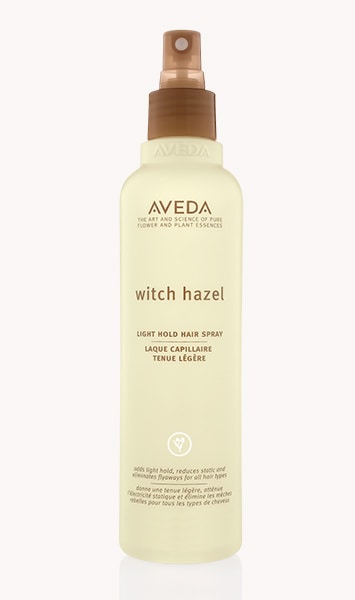
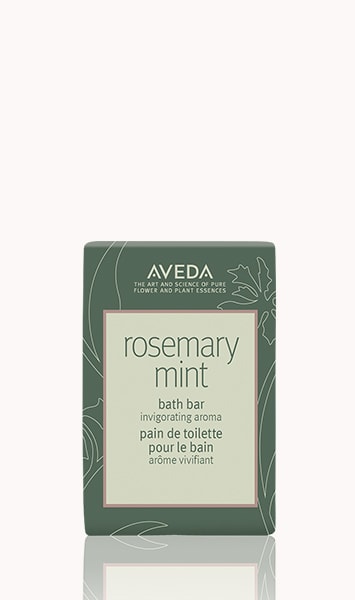
4. Kiss My Face
Kiss My Face uses sustainable, plant based ingredients, and is committed to using post consumer recycled packaging in every bottle, box and store display. All products are cruelty free and most products are vegan. This company offers bar soaps, body lotions and washes, deodorant, and shaving creams as well as; facial cleansers, eye creams, masks, moisturizers, toothpaste, shampoo and conditioners, sun and lip line PLUS a mens and kids section.





5. Elate Cosmetics
Elate beauty is sustainable, all compacts, tools and palettes are made from bamboo. This company offers refills and all refill packaging is seed paper. Elate is vegan, cruelty free, sustainable and clean. This company sells makeup essentials such as eye color, mascara, eye liner, brow balm, foundation, powders, concealer, and lip colors.



Friday, April 21, 2017
Manatee Facts
Manatees have been on the endangered species list for years but as of January 2016, the U.S Fish and Wildlife Service announced that the West Indian manatee has been removed from the endangered species list to the threatened species list. In the 1970s just a few hundred manatees were swimming the seas but the current population just in Florida is around 6,620.
There are 3 types of known manatee species:
- West Indian Manatee, the largest species of manatee in the world.
- Amazonian Manatee, generally found in freshwater lakes and lagoons.
- African Manatee, the least known species.
Manatees are close relatives to Elephants, Hyrax, Dugong and Stellar's Sea Cow. "Manatee" comes from the Crab word "manti" which means breast udder. Adults can grow to 13 feet long and weigh 1,300 pounds. Manatees are the largest herbivores in the ocean, they consume 10-15 percent of their body weight in vegetation every day. Manatees are large and gray with a paddle-shaped tail and they have two flippers with 3-4 nails on each. They also have a large snout with wrinkled faces and whiskers. Using their tails they can go short bursts at 15 mph but typically like to swim at a mere 5 mph.
Habitat:
Manatees can typically be found in shallow, slow-moving rivers, salt-water bays, canals, and coastal areas. Manatees are migratory and can be found in Florida in the winter. The summer months they can be seen from as far as Texas to Massachusetts. West Indian Manatees can also be found in coastal and inland waterways of Central America and along the northern coast of South America. Manatees can hold their breath for 15 to 20 minutes but they usually surface every 5 minutes to breathe. With one breath a manatee can replace 90 percent of the air in their lungs, compared to humans who can only replace 10 percent.
Death and Protection laws:
Manatees have no natural enemies and it is believed that they can live up to 60 years plus. Most manatee deaths are due to natural causes but a high amount of deaths is human-related. Most human-related fatalities involving manatees are usually collisions with watercraft or being crushed in canal docks. Another large percentage is the ingestion of fish hooks, litter, and entanglement in crab trap lines. The biggest and most serious threat to manatees is loss of habitat. Manatees are protected under the Manatee Sanctuary Act which states its unlawful to molest, harass, or disturb the animals.
Offspring:
Manatees are not sexually mature until 5 years old and their reproductive rate is fairly low. During mating, a female manatee will be followed by 12 or more males. One calf will be born every two to five years. A female manatees gestation period is about a year and mothers will nurse for the first two years of the calves life.
Friday, April 14, 2017
Beach Clean-up Essentials
| photo from surfrider foundation |
1. Gloves
You can use whatever gloves you have or prefer, I used to just buy a box of medical grade gloves BUT it is not very sustainable to use plastic when trying to rid plastic so I started to opt for fabric garden gloves. You can get cute ones or use ones you may already have laying around, it's really up to you. You also have different options as to what type of glove, again it doesn't matter that much as long as it's comfortable and lets your hands breathe but won't puncture easily. They're also fairly cheap so if you can't afford much there are tons of options under $10.
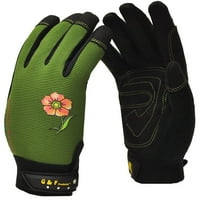
2. A bucket
You can, of course, use any sort of trash bag or plastic bag you may have gotten at the grocery store but if you're looking for something more sustainable and easier to work with I recommend a bucket. Typically this works well especially if it is breezy. I've had so many times I was using a trash bag and it somehow opened on me and trash fell out or I put the bag down to do something and the wind took it. Another problem I always came across was the bag twisting around itself and not being able to open it easier and I spent more time fighting with the bag than picking up the trash. With a bucket, you just plop it in the area you are working and throw things in as you go, you have two hands to work with and it makes things flow much easier. Another suggestion is using a lid on your bucket so when it starts to become full, you aren't losing pieces of trash from the wind blowing them out. The best part is that though the bucket is typically plastic it is reusable and you can buy them in bulk if you are organizing a cleanup. You could also use those pop-up hampers, the only con to those is that they can fly away and they aren't as easy to cleanout.
3. First aid kit
You don't need to carry this one with you but I would recommend keeping one in your car or at your beach station if you've set up a towel with other things. You never know what could happen while cleaning up, anything from cuts and scratches to insect bites. You have tons of different options from basic kits to advanced if you're first aid certified the more pieces in a kit you buy, the better.
4. Reusable water bottle
A must. It will be hot on the beach, especially in summer, you'll be doing a lot of walking and bending down and standing up. You will want the water. Some beaches have water fountains where you can refill your bottle as you go as well. I recommend stainless steel, you can use glass as well but when the bottle sweats the sand will stick to your glass a lot more than a steel one.
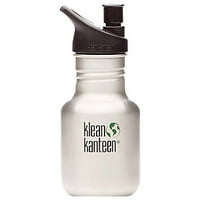
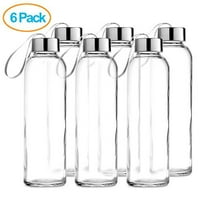
5. Scale
This one is definitely optional. I prefer using a scale so at the end of the day I can weigh the amount of trash I have picked up and keep a log. A simple food/kitchen scale will work for this (obviously one that is designated for trash only.)
Friday, April 7, 2017
Support for Sand Cloud
Sand Cloud was founded in 2014 and started out as a small business selling handwoven Turkish towels. In February 2017 Sand Cloud was featured on the hit tv show Shark Tank and got a deal with shark Robert Herjavec. Since their deal in just four months, they went from $1.6 million to $2.7 million. Now, what is Sand Cloud you ask?
Sand Cloud is a company that sells towels, apparel, and accessories. Every purchase from their website guarantees a 10% profit donation to non-profits that support the Sand Cloud mission.
These non-profits include.
- Marine Conservation Institute
- Surfrider Foundation
- Pacific Marine Mammal center
- San Diego coast keeper
- Hawaii wildlife fund
- Ocean connectors
Sand Cloud also offers a Monthly VIP subscription. For $26 a month you can get an exclusive t-shirt and matching socks based on the marine animal of the month. The total value of the box is over $50. Each month 10% of your box subscription will be donated to the marine nonprofits listed above.
Sand Cloud also offers an ambassador program. The ambassador promise is to
1. Spread the mission using social media
2. Get the chance to be featured on social media
3. Discounts on all products
Just hashtag #SaveTheFishies to spread the word.
Visit: https://www.sandcloud.com/
Friday, March 31, 2017
Their Story; Kalina
My name is Kalina, I was born September 25, 1985, in Seaworld, Orlando and I was the original Baby Shamu! My mom was Katina, she was captured from Iceland and her dad (my grandfather) Winston spent all of his life in the UK before being bought to Seaworld, San Diego where he died at 15 years old. When I was just 4 years old I was taken from my mom to be at another facility. They say my mom cried sounds never heard by whales before because she was so upset I was separated from her.
I was sent to Ohio in 1990 where I didn't stay long, ten months later I was moved to San Diego. I was then taken from San Diego to San Antonio just eight months after. It was in Texas I was bred and became pregnant with my son Keet, I was only 7 years old. In the wild, we wouldn't start calving until we were at least 12. A little over a year later I had my second son Keto.FINALLY, I was reunited with my mom Katina in Orlando but she didn't remember me. I then gave birth to two stillborns Tuar and Skyla. I was constantly being bred and giving birth but never allowed to bond with my babies because they would take them and move them to other facilities just like they did me.
Shortly before my death, I was being bullied by another female in the tank called Kayla. We had many physical fights that interrupted shows and they always left me injured. In October 2010, I died from septicemia.
Rest in peace Kalina
Friday, March 24, 2017
Shark Finning.
Shark finning has become very popular in the past 15 years. The shark population is declining rapidly because the top predator is no longer in the sea but on land. Humans will slice off the sharks fin and throw the animal back into the water with no disregard for the living being. Shark fins are a large target for fisheries because they have a large price value. Shark finning is part of a multi-billion dollar industry, shark fins can go from $300 a pound or higher.
Shark finning is extremely popular in Asia as they use the shark fin for a cultural dish. A shark fin soup is used as a hierarchy status. It is believed that shark fin soup has medicinal benefits, and was a soup favored by Emperors.
Over 100 million sharks are killed yearly due to the popularity of their fins. What is shark finning you ask? Shark finning is the act of removing fins from sharks while they are still alive, once the fin is removed the shark is thrown back into the ocean to fend for itself. The fisher will remove the sharks' primary and secondary dorsal fins, pectoral fins, pelvic fins, anal fin, and caudal fin or the entire tail. In the end, the shark will float to the bottom of the ocean where they will essentially suffocate or become prey for others.
Sharks that are typically targeted.
- Blacktip
- Blue
- Bull
- Hammerhead
- Porbeagle
- Mako
- Sandbar
- Thresher
- Tiger
- Great white
You can make a change. Go to the link below and help ban the Shark Finning trade in Florida.
Friday, March 17, 2017
A list of must-watch documentaries and where to find them;
I've been doing a lot of digging to expand my education on the things I care about, I've watched documentary after documentary and have formed a hefty list of must-watch movies, from captivity to plastic pollution and dolphin slaughtering. Some of these movies are graphic and hard to watch but if you can push through it, your eyes will be opened to some of the biggest problems with our earth and with humanity. Let's dive into this list and dare to learn the truth.
1. Blackfish
Netflix released this controversial 2013 documentary film with the intent of shedding some light on the captivity issues at SeaWorld. The film mostly follows Tillikum, one of SeaWorld's captive orcas. The movie shows the extreme stresses of capturing wild orcas and breeding them for entertainment. This film does include footage of attacks on trainers and interviews with witnesses, as well as the heartbreaking story of Katina and Kalina (SeaWorld's whales) and their separation.
2. A Plastic Ocean
In 2016 Netflix released this riveting documentary following a journalist and filmmaker named Craig Leeson who is searching for the blue whale. In the midst of his adventures, he discovers plastic waste polluting the oceans. Leeson teams up with a free diver named Tanya Streeter and an international team of scientists and researchers. They then travel around the world for four years, exploring the state of our oceans and uncover alarming truths about plastic pollution, how it affects marine life and try to find solutions that can be put into effect as soon as possible. This film features some disturbing photos of what happens when marine life ingests plastic.
3. The Cove
The Cove can be found on Hulu, this heart-pounding 2009 film takes place on the coast of Taiji, Japan. This documentary covers dolphin hunting, mass dolphin kills, Japanese fishing practices and informs the public about the risk of mercury poisoning. Thousands of migrating dolphins are herded in a cove where they are trapped and killed by fishers. This film argues that dolphin hunting is unnecessary and cruel. The Cove has also drawn a lot of controversy over secret filming and portrayal of Japanese people. This film was partly recorded using underwater microphones and high-definition cameras disguised as rocks. WARNING: This film is extremely graphic with images of dolphins being killed and bloody waters.
4. Swimming With Killer Whales
This captivating 2011 film follows Dr.Ingrid Visser as she shares the seas with Killer Whales (Orcas.) It can be found on Netflix, and covers the issue of the misconception of the Killer Whale and also looks for clues to the state of our oceans.
5. Mission Blue
This 2014 documentary is featured on Netflix, legendary oceanographer, marine biologist, environmentalist, and National Geographic Explorer in-residence Sylvia Earle takes us on an eyeopening mission to protect marine sanctuaries.
6. Troubled Waters
This 2015 student-made film can be found on Youtube, this film focuses on pollution, climate change, and the fishing industry. The fishing industry is massive and survives on taxpayer subsidies. The demand for seafood is so large it has taken an impact on our seas. Troubled Waters takes a look at the long term economic and environmental ramifications on the fish population.
7. Inside The Tanks
Inside The Tanks is a 2017 documentary that can be found on Youtube. This film looks at both sides of the controversy that surrounds marine captivity. This unique documentary we get to see in depths interviews between The Born Free Foundation, Dr.Ingrid Visser, ex Seaworld trainer John Hargrove and an exclusive interview with with the Zoological director of Marineland franchises, Jon Kersaw.
8. Drop In The Ocean?
This 2016 film can be found on Vimeo, "Drop in the ocean?" is all about Ireland and Climate change. In less than 50 years ocean life as we know it will be a thing of the past. Dead ocean. Dead ecosystem. Governments in 1990 started gathering to discuss ho to avoid global warming and reduce carbon emissions.
9. Planet Ocean
Planet ocean is fascinating as it does not just focus on one part of the ocean but the entire planet as an ecosystem. This 2012 documentary can be found on Vimeo. The ocean provides us with things we need to survive such as seaweed which is used in medicines, cloth, fertilizers, and food. However the fishing industry has reached capacity and the footprint of humanity is felt everywhere. This film shows the importance of how humans are the greatest threat to their own home.
10. Sea The Truth
This 2010 film can be found on Youtube, and covers global warming and over fishing. We still don't know much about Earth and all it has to offer but yet our earth is 2/3 water and we use that as dumping grounds for our trash. Our most important ecosystem is on the verge of collapse as our oceans are becoming emptier and emptier. We are about to face one of the biggest disasters in man kind. 90% of predatory fish and 80% of commercial fish are gone.
11. Plastic Paradise
This 2013 film takes a look at the Great Pacific Garbage Patch, or in other words, a trash vortex in the North Pacific Ocean. This vortex was discovered between 1985 and 1988. This is essentially a collection of plastic and floating trash between Hawaii and California. This film follows Angela Sun and her personal journey to uncover the truth of the garbage patch and how severely it is effecting our ecosystem and marine mammals. Sun sheds light on one use plastic consumption and what is is doing to our oceans. This film can be found on Youtube but caution is advised, this film shows some very graphic images of dead birds and other animals.
Friday, March 10, 2017
Seaworld could have the potential to be something.
What if...Seaworld was a place you could go to be educated on the rehabilitation of sea animals? A center that shows the process of rehabbing animals back to health. Exhibits showing rescue missions. Live on-screen releases back to the ocean.
What if...Seaworld was a place you could go to be educated on plastic reduction and ways to prevent plastic pollution in our oceans? Interactive games showing what should be recycled and where. A water ride through a polluted ocean and the effects it has on sea animals.
What if...Seaworld was filled with interactive rides that stimulate the brain and teach about how marine animals live. "Orca Encounters" but instead of Orcas performing tricks for entertainment, it's a 4D simulator ride that takes you on the journey of a pod, how they hunt and live day to day.
What if...Seaworld released their Orcas to a sanctuary and let visitors watch them from afar while they live in their ocean homes. Or had a whale tracker that tracked their whales and pods and you could follow them in real-time, on their time.
These are just a few things Seaworld could do that would make them money, get their clientele back, and make it as educational as possible. Empty the tanks and make a profit off educational experiences instead of the abuse techniques they use to teach their animals tricks.
#EMPTYTHETANKS
Friday, March 3, 2017
People's climate march!

On April 29, 2017, thousands of people rallied on the streets of Washington DC and all-around cities in America as the Trump administration takes over the US. Marchers poured in to sound off on the major threats of Earth's climate change.
"Resistance is here to stay, welcome to your 100th day."This outcry comes out of fear for our environment, just 100 days into presidency, Trump has already signed executive orders aimed to roll back the Clean Power Plan. Not long after this, he began initiating reviews aimed at opening up protected lands and water to drilling, mining, and logging.
Source:
https://www.nytimes.com/2017/04/29/us/politics/peoples-climate-march-trump.html
Friday, February 24, 2017
DIY mason jar upcyle!
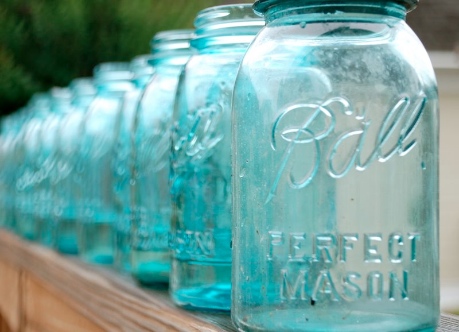
This week I've compiled 3 DIY mason jar ideas to upcycle your mason jars and reduce your plastic waste!
 Salt and pepper shakers! These simple cute shakers will be a staple in your house AND it's super quick and easy! Find out how to make them here
Salt and pepper shakers! These simple cute shakers will be a staple in your house AND it's super quick and easy! Find out how to make them here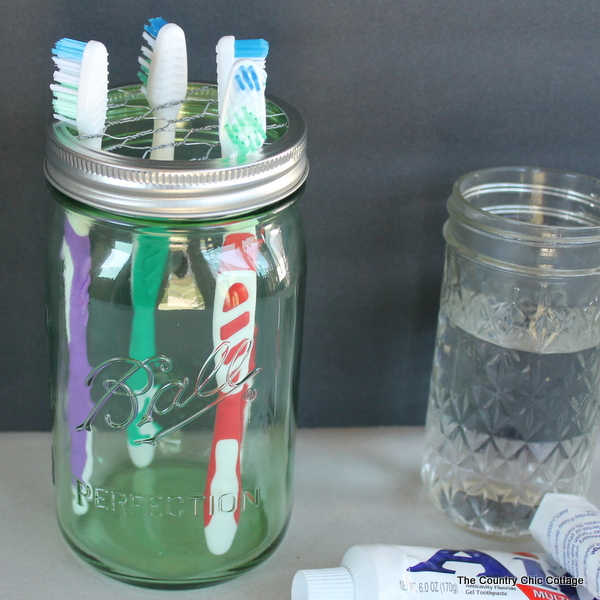 Toothbrush holder! This DIY only needs 2 items, a mason jar, and chicken wire! Find out how to make this DIY here
Toothbrush holder! This DIY only needs 2 items, a mason jar, and chicken wire! Find out how to make this DIY here Soap dispenser! If you use liquid soap in place of bar soap this is a simple way to spice up your bathroom counter and its plastic-free. Find out how to make this DIY here
Soap dispenser! If you use liquid soap in place of bar soap this is a simple way to spice up your bathroom counter and its plastic-free. Find out how to make this DIY here
Labels:
activism,
change,
environment,
go green,
green lifestyle,
green living,
plastic,
plastic free,
pollution,
recycle,
reduce reuse recycle,
sustainable living,
tree hugger,
zero waste
Subscribe to:
Comments (Atom)





















